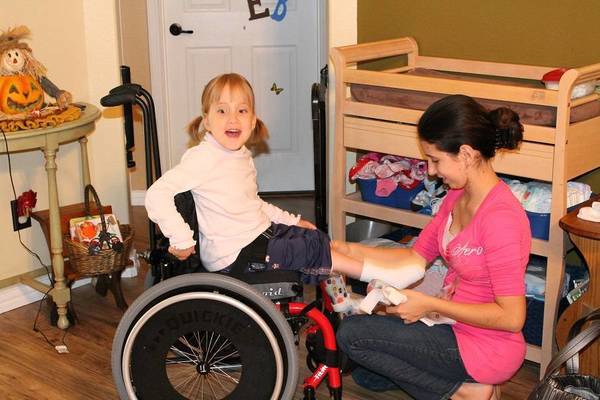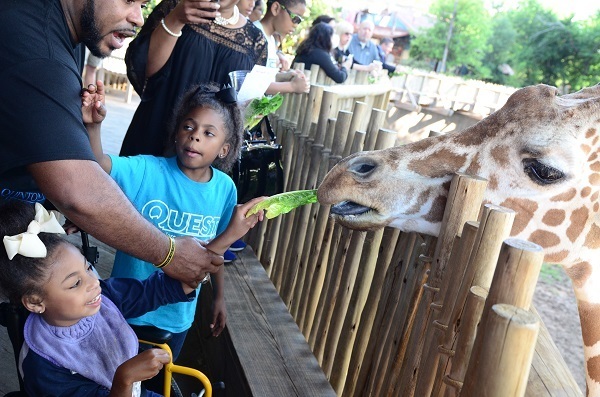
A small but mighty force for good exists in Texas. Since its launch in 1977, Helping Restore Ability (HRA) has dedicated every resource to its mission of providing in-home caregiver services to Texans living with disabilities, so they can avoid institutional care and live full, independent lives. Part of HRA’s innovation has been to look beyond just the numbers—how many clients they serve, how many caregivers they employ, dollars saved, and so on. The numbers help guide the mission, but it’s the people those numbers represent that propel HRA to reach for a deeper understanding of the work they are doing.
HRA came to LEO in 2020 to learn how to better engage caregivers in a new training program to solidify their skills and thus boost the health and well-being of the people in their care. HRA works with a network of over 1,500 caregivers across the state of Texas who dedicate their lives to selfless service. Building evidence around what works to develop the skills and confidence of these caregivers resonated with LEO’s researchers—they saw the potential to impact both the health outcomes of people with disabilities and the professional experience of caregivers.
What the research team—led by LEO Faculty Affiliates and Notre Dame Economics Professors Ethan Lieber and Christopher Cronin—and the HRA team first learned was that not all goes according to plan. The initial experiment was set up like this: HRA’s caregivers were divided into five groups. Four groups received emails with varying levels of altruistic messaging and offers of financial compensation, all aimed at encouraging caregivers to participate in the training program. Members of the fifth group acted as the control and received only a basic informational email about the training. The aim was to determine the most cost-effective way among several alternatives to encourage the most caregivers to complete the training program.

The problem? Initial data showed no statistically significant results that any of the alternatives improved training take-up. What it did show was that many people do not read their emails. This is understandable—emails pile up, and when one’s focus is on client care, email rightfully takes a back seat.
So Ethan and Chris tried a different tack and simplified the treatment groups. One group of caregivers got an email with an offer of $50 if they completed the training, while another group got an email with an offer of $10 just to reply to the email. As before, the control group simply got an email alerting them to the training being offered.
This time, the study produced statistically significant data. Ethan and Chris found that roughly 13% of HRA caregivers were willing to do the additional training without being incentivized in any way—they did it because they wanted to. When monetary compensation was offered for completing the training, the completion rate grew by 8.4 percentage points.
After two experiments, what can be said? Ethan Lieber points out that the findings so far suggest it can be very hard to encourage caregivers to take the voluntary training just for trainings’ sake, and an increase in the compensation amount offered may result in more caregivers completing the training program.
The offer of $50 was slightly more than four times the caregivers’ hourly wage—but even so, only about one in five caregivers completed the training and earned the compensation. Is this because there is also a cost borne by the caregiver, one that HRA and the research team doesn’t see? Taking the time to do even a one-hour training means a caregiver can’t use that time in other ways, ones that may benefit them personally or monetarily.

Ethan and Chris point to an additional hurdle that organizations could face when engaging caregivers in voluntary training—just reaching caregivers with the opportunity in the first place. They believe that only one-third of HRA’s caregivers in the original study design were even reading the emails about the training, leaving most unaware that the opportunity even existed. If the goal is to get as many caregivers trained as possible, Ethan says, we need to understand how best to inform them that the training exists.
Vicki Niedermeyer, HRA’s President/CEO, agrees, but is quick to affirm that the study with LEO is not just about getting training numbers up. It’s about ensuring that HRA caregivers take advantage of opportunities to learn and strengthen their skill set so that they can provide the best care possible to their clients—people who rely on them for navigating daily living and maintaining their independence and stable health.
Today, most of the funding HRA receives goes to compensate its caregivers. Data from HRA’s study with LEO can help to ensure this high level of support. If HRA can show that more of its caregivers have completed training, it can get higher reimbursement rates from insurance companies—funds it can then pass along to its caregivers.
Vicki wants to see a world where living at home is possible for every American. That means making sure enough caregivers are trained and equipped to handle the demands of the profession. Vicki and her team are dedicated to making this vision a reality, but know they need data to do it, and to show that behind those training take-up numbers are real caregivers with the potential to make a difference in the lives of millions of Americans with disabilities who are ready to thrive.
Originally published by at leo.nd.edu on June 29, 2021.